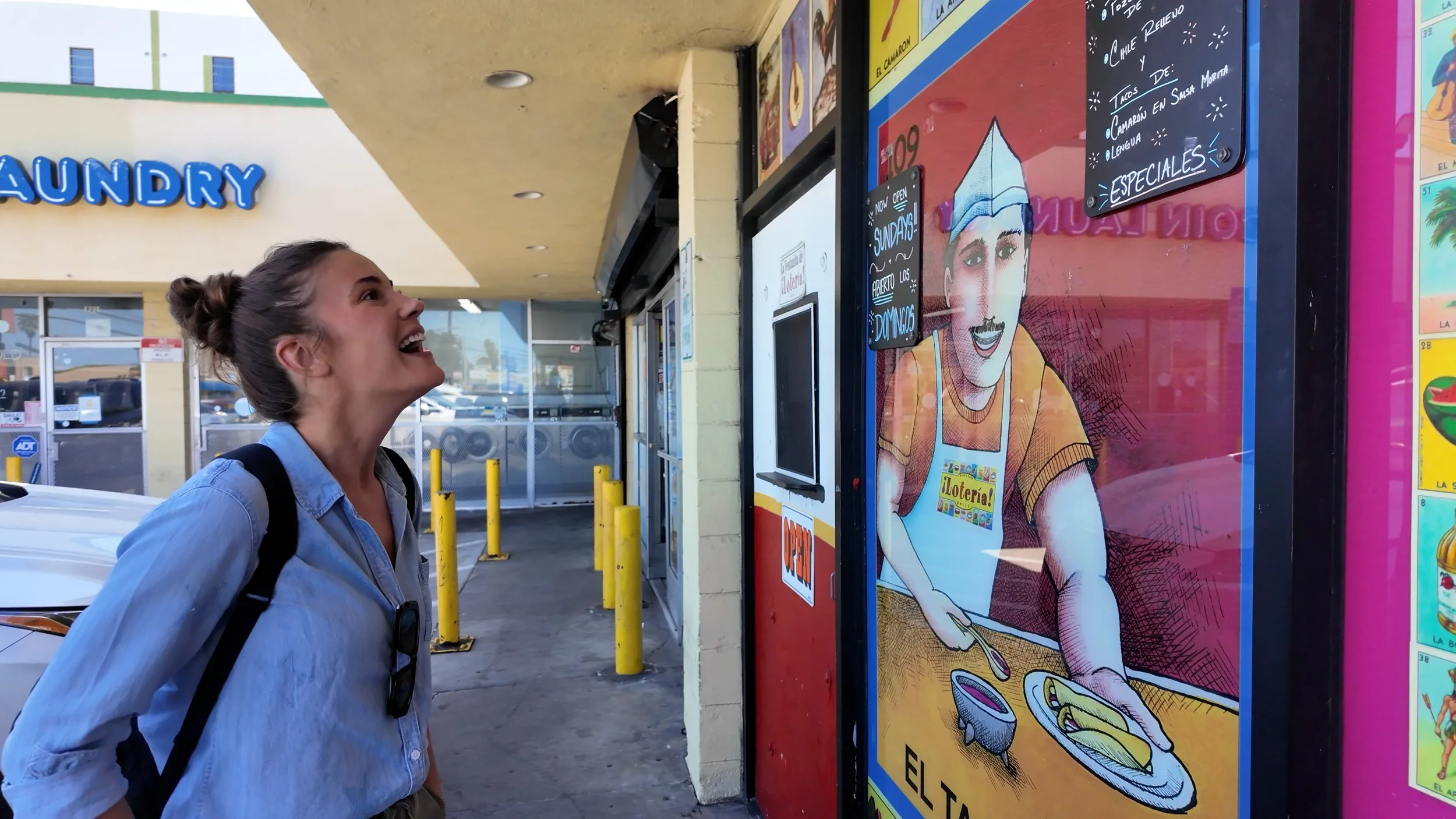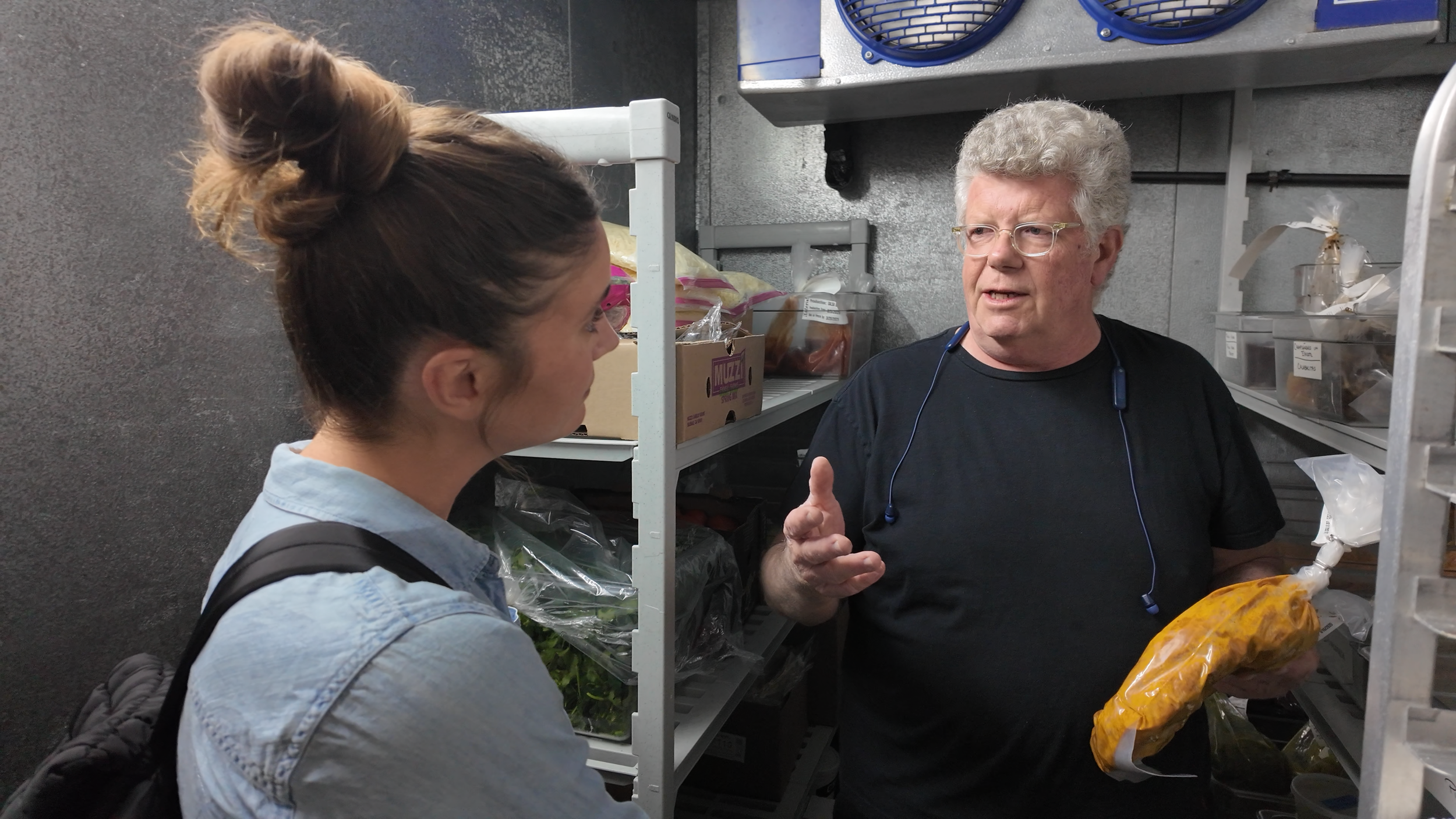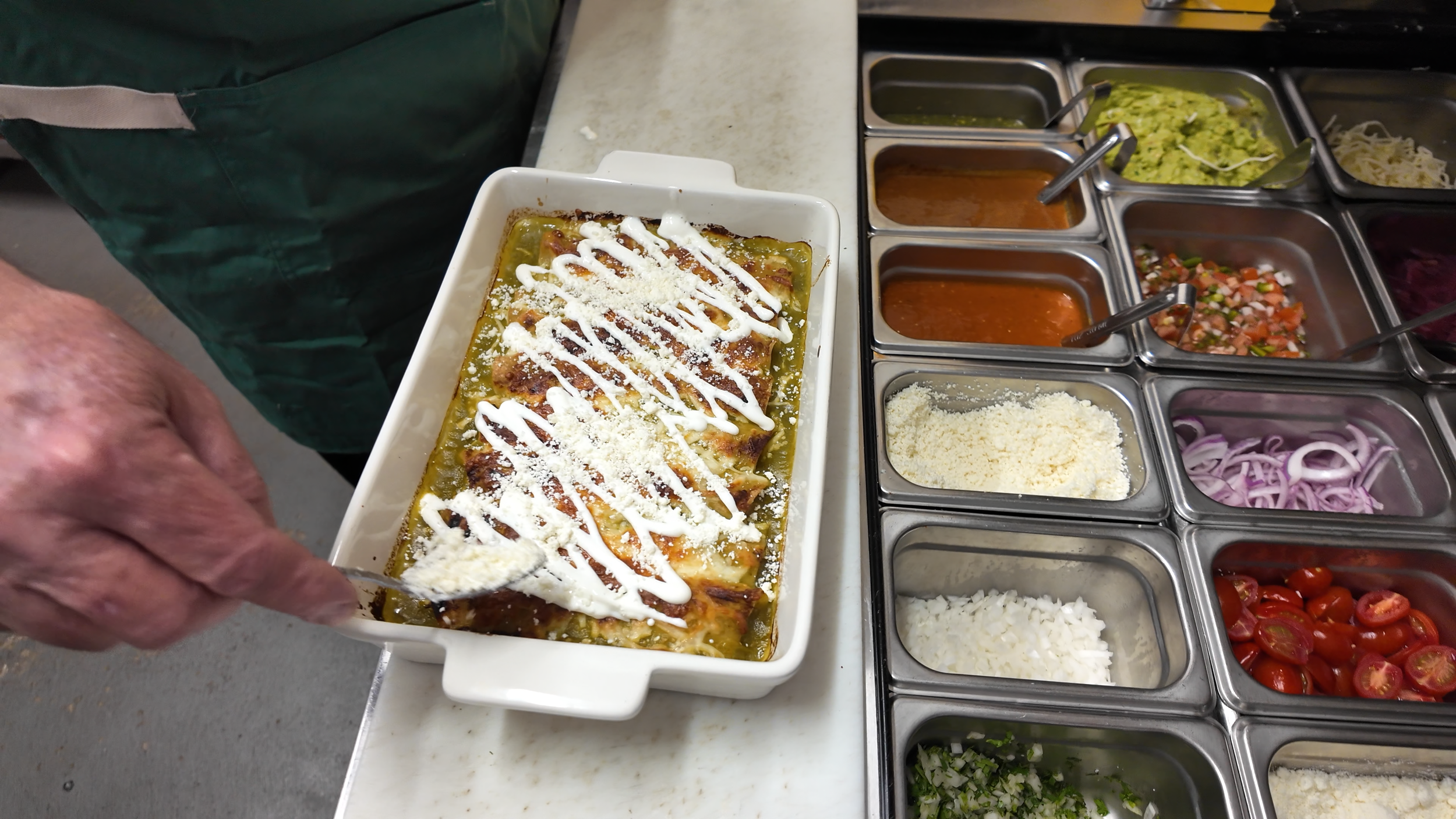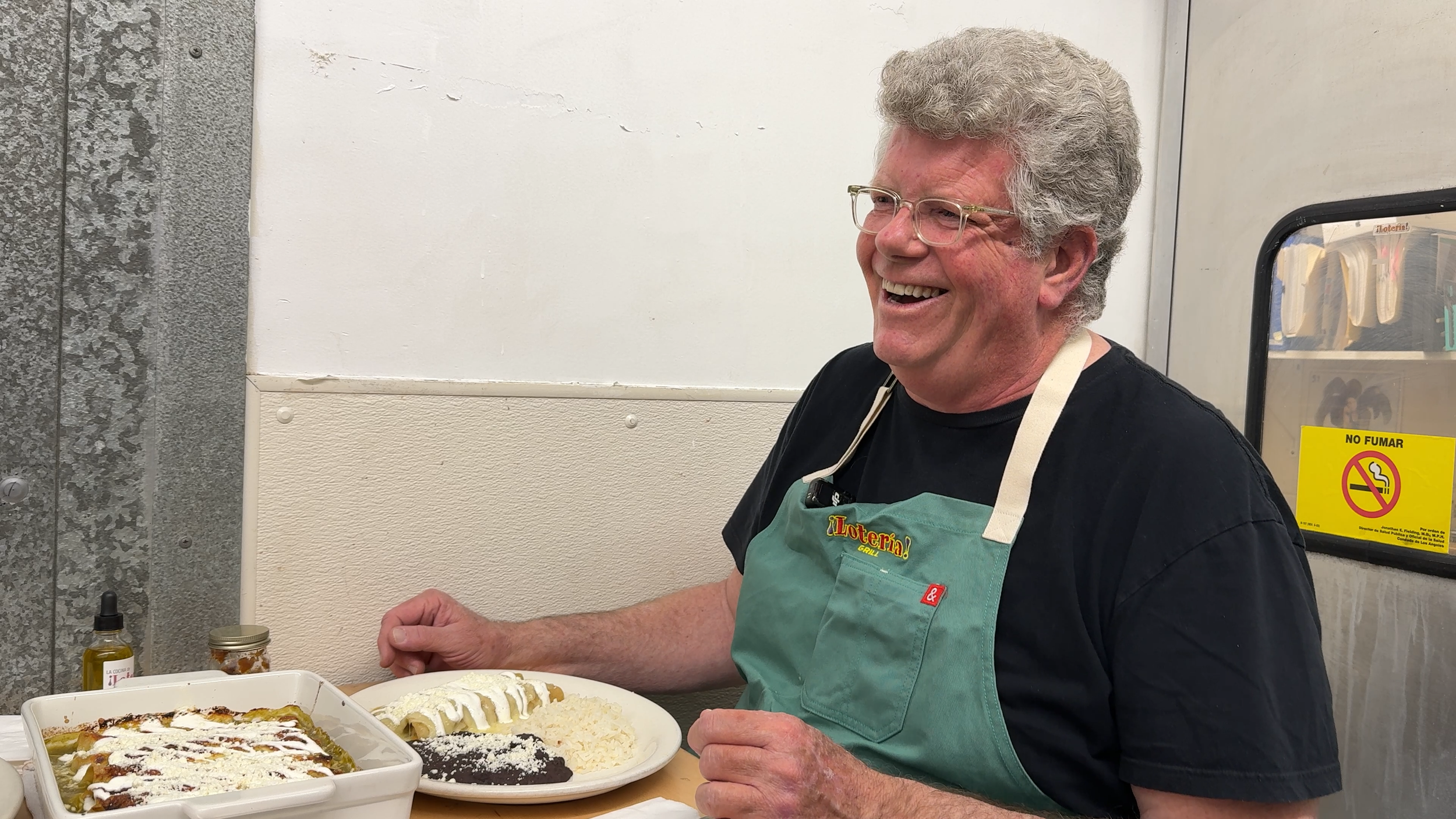The Depth
of Flavor
By Hannah Drake Litman
The depth of a food’s flavor describes the layered richness and complexity of a dish.
A show for the gastronomically curious, “The Depth of Flavor” focuses just as much on identity and connection as it does on the food shared between two strangers.
DIRECTOR’S NOTE
Food is not merely sustenance. While necessary for cell growth and basic human function, food reaches beyond biological necessity and impacts us in ways that cannot be observed under a microscope. Experiences that we have with food — the smells, the rituals, the memories — shape who we are, how we interact with the world around us and who we become.
Modern interpretations of the expression “You are what you eat” center around diet culture, slathering a layer of morality onto our food choices and telling us that the person who opts for foods that are higher in nutritional value, lower in calories and certainly at a higher price point is not only more attractive and more intelligent but also ethically superior.
However, the origin of the phrase is philosophical, not prescriptive. It dates back to the early 19th century when French lawyer, judge and gastronome Jean Anthelme Brillat-Savarin published his passion project “Physiologie du Goût," which translates to “The Physiology of Taste.” The book opens with a section titled “Aphorisms of the Professor,” which contains a list of 20 principles meant to act as a “lasting foundation for the science of gastronomy.” The fourth aphorism reads “Tell me what you eat, and I shall tell you what you are.” A 1949 translation of Brillat-Savarin’s work by legendary food writer M. F. K. Fisher expanded upon this entry when she paraphrased, “Tell me how you eat, and I shall tell you what you are.” This evolution suggests that food choices are not solely focused on nutrition, but also representative of identity, behavior and personal values. Ken Albala, a food historian and professor of history at University of the Pacific agrees that food selections go beyond preference. “Your choice of food is communication to other people, that you’re telling them about something about yourself,” Albala says. “It’s a reminder of why you like the things you like and who you are and why you have certain values.”
Food has the power to evoke emotion within us, attaching scents, flavors and experiences to our memories, comfort and culture. The emotional power of food is something that Tanya Holland, chef, author and restaurateur acknowledges when she explains why she enjoys cooking for others. “Placing food in front of people, watching them eat, taste it, the joy, the trance, like how it transports people to a new place, a familiar place or a new place.” This visceral experience does not align with the contemporary judgment surrounding Brillat-Savarin’s centuries-old aphorism. Like a game of telephone, the heart of the message has been distorted over time.
The meals we choose to eat and avoid govern our health, our habits, our cultures and even our emotional well-being. In this way, we truly are what we eat. In “The Depth of Flavor” I aim to dig into the core of this truth by sitting down with a stranger and sharing a meal with them. My only request is that the meal holds deep significance for them. The meal is just the beginning. The cleaner our plates become, the more I will learn about my guest’s history, personality and ultimately, their relationship with the world.
THE HOOK
Driving through Los Angeles with nothing but an address and a few cameras, Hannah Drake Litman is on her way to meet a stranger for a meal. She doesn’t know who they are, where they will be eating or what will be served. Shot on a gimbal, the audience is along for the ride with anticipation building around who she’ll meet, what they’ll eat and what it could all reveal.
THE SETTING
Each episode of “The Depth of Flavor” takes place in a new setting depending on who Hannah is meeting and what food they will be eating together. Filmed using a mix of gimbal-driven motion shots and multi-camera interview-style setups, the energy, food and ambient noise may shift from episode to episode, but conversation and curiosity remain constant. Narration along with archival images and articles provides structure to the unscripted dialogue.
Host Hannah Drake Litman sits with a guest she’s never met to share a meal that holds significance for them. Each episode illustrates the power of food as a gateway to identity, memory and human connection, proving that what we choose to put on our plates speaks volumes about who we are as individuals and how we interact with the world around us.
THE THEME
Chef Jimmy Shaw takes a beat before describing exactly why he chose chicken and cheese enchiladas verdes as the meal he wished to share with me. He’s already said that it reminds him of his mom and how it’s also the best-selling dish at his restaurant. As he scoops rice and beans into his fork, tangy from soaking in salsa verde, a small smile spreads across his face. “It’s just a very noble plate,” says Shaw.
Episode 1:
A Very Noble Plate
Noble
/ˈnō-bəl/ adjective
Possessing very high or excellent qualities or properties; possessing, characterized by, or arising from superiority of mind, or character or of ideals or morals
In the premiere episode of “The Depth of Flavor,” we head to Mid-City Los Angeles and find ourselves stepping into the industrial kitchen at Lotería Grill. Executive Chef Jimmy Shaw eagerly shows me around his office, including an exclusive tour of the walk-in refrigerator. Before I even know what we are eating, Shaw tells me that we will be digging into two versions of the same dish. One as it is served at Lotería Grill, and another as his mother would serve it. Both are her recipes. “This is my dear mother coming back to life,” Shaw says.
In the back of his kitchen, next to the ice machine, stands a tiny table normally reserved for employee breaks. Shaw and I sit there together as he warmly recalls cooking and eating with his mother in Mexico City, childhood memories that freckle his mind like the sprinkle of cotija cheese on the chicken and cheese enchiladas verdes we share.
The enchiladas bring Shaw comfort as they were the meal his mother made him each time he came home to visit from college in Pennsylvania. They carry her legacy of passed down recipes as well as resilience. As the top-selling plate at Lotería Grill for over 20 years, they have become a symbol of tenacity as Shaw has navigated the tumultuous L.A. restaurant scene. And they remain a source of joy as his mother modeled the deep gratification that comes from feeding others.
As becomes clear in our time together, sharing his mother’s enchiladas verdes is Shaw’s way of honoring her legacy while creating his own. It feels as though I’m seated at her table in Mexico City, exhausted and famished from a long flight home–ready to be restored by this plate of food that will nurse me back to health the way it has healed Jimmy Shaw time and time again.
“One of the most delicious parts of food is the conversation.”
— Chef Jimmy Shaw on sobremesa







